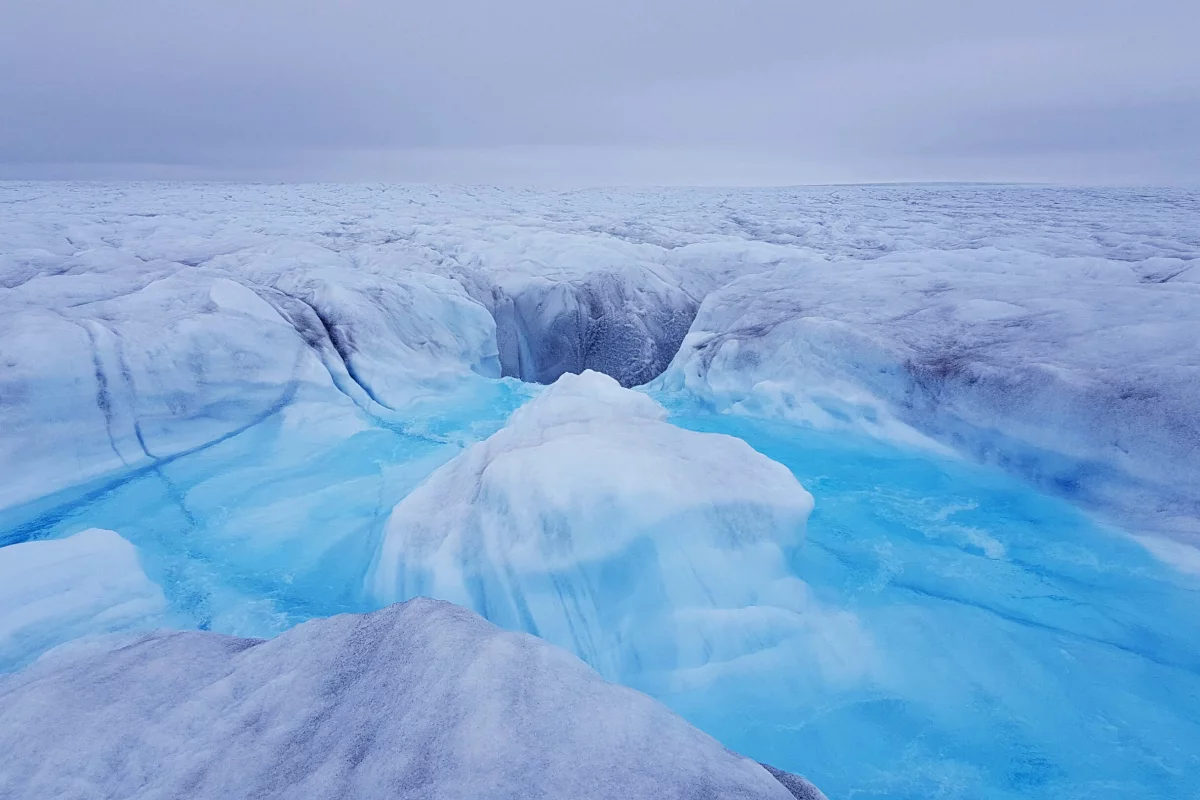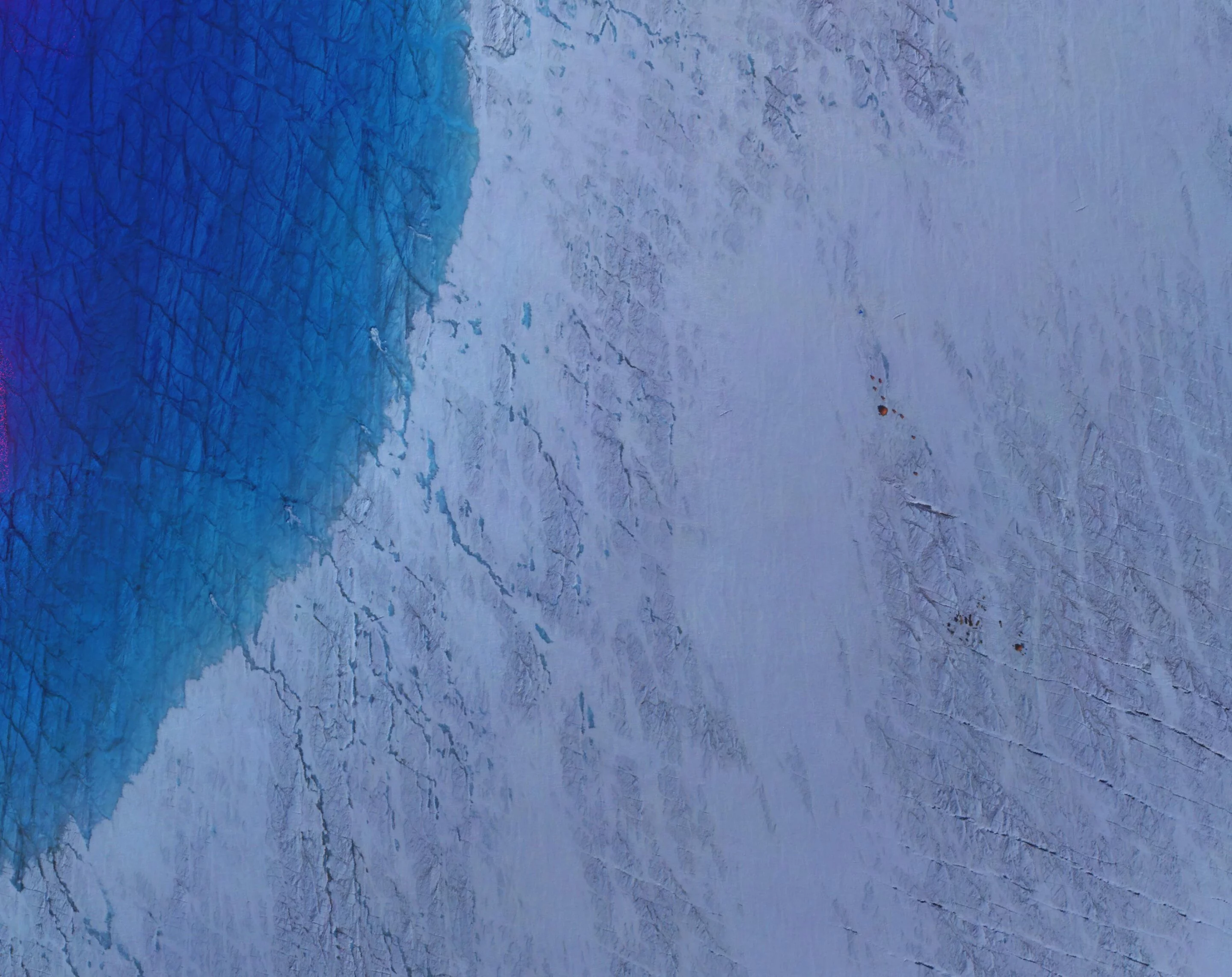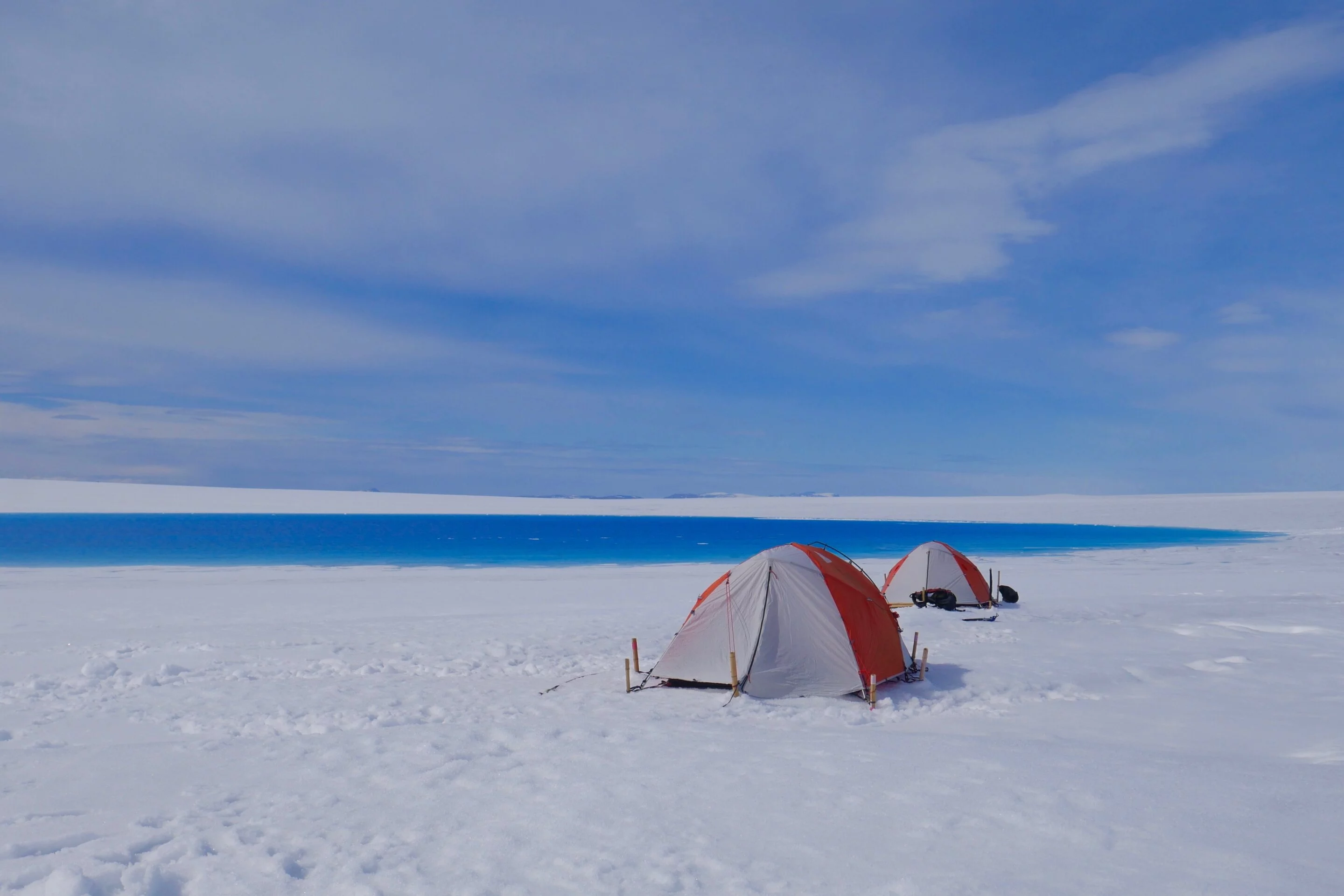For the past seven years, a science team led by Professor Poul Christoffersen from the University of Cambridge has been studying meltwater lakes pooled atop the Greenland Ice Sheet, seeking to better understanding the role they play in the behavior of the massive body of ice as a whole. The group's latest findings reveal that meltwater is falling to the base through cracks in the surface with such force, the power produced is comparable to that generated by the world's largest hydroelectric power station, creating a melting effect at the bottom that is "completely unprecedented."
Christoffersen and his team have been studying the Greenland Ice Sheet's meltwater lakes in an effort to learn more about how they drain, and what makes this process happen so quickly. These lakes form on the surface each summer as the ice sheet is subjected to longer days and higher temperatures, with the water falling fast through cracks and fractures in the ice, to the bed of the ice sheet around a kilometer (0.6 miles) below.
“When studying basal melting of ice sheets and glaciers, we look at sources of heat like friction, geothermal energy, latent heat released where water freezes and heat losses into the ice above,” said Christoffersen. “But what we hadn’t really looked at was the heat generated by the draining meltwater itself. There’s a lot of gravitational energy stored in the water that forms on the surface and when it falls, the energy has to go somewhere.”

The scientists' current focus is on the Store Glacier, one of the ice sheet's largest outlets. Conducting direct measurements of conditions at the bed of the ice sheet has proven difficult, but the scientists used a technique called phase-sensitive radio-echo sounding, which enabled them to measure the melt rates at the glacier's base. Some of these basal melt rates were found to be as high as those on the surface, despite the fact that the surface is blasted with sunlight while the base is not.
To understand the reasons why, the authors of the study calculated the amount of meltwater falling to the bed of the glacier, which they concluded to be as much as 82 million cubic meters every day during the summer of 2014. According to the team, the power produced by this much water falling to the base is comparable to the power produced by the world's largest hydroelectric power station, at the Three Gorges Dam in China.
Applying this to meltwater areas across the entire ice sheet at the height of summer, which cover nearly a million square kilometers (386,000 sq miles), the team says it produces more hydropower than the world's 10 largest hydroelectric power stations combined. The researchers believe this effect, which hasn't been factored into the ice sheet's contribution to sea level rise, may only increase as the planet continues to warm.
"Given what we are witnessing at the high latitudes in terms of climate change, this form of hydropower could easily double or triple, and we're still not even including these numbers when we estimate the ice sheet's contribution to sea level rise," said Christoffersen.
The basal melt rates were verified by sensor readings taken from a nearby borehole, which showed the temperature of the water at the bed of the ice sheet to be as high as 0.88 °C (33.6 °F), despite the ice sheet base having a melting point of -0.39 °C (31.3 °F).
“The borehole observations confirmed that the meltwater heats up when it hits the bed,” said Christoffersen. “The reason is that the basal drainage system is a lot less efficient than the fractures and conduits that bring the water through the ice. The reduced drainage efficiency causes frictional heating within the water itself. When we took this heat source out of our calculations, the theoretical melt rate estimates were a full two orders of magnitude out. The heat generated by the falling water is melting the ice from the bottom up, and the melt rate we are reporting is completely unprecedented.”
The research was published in the journal Proceedings of the National Academy of Sciences.
Source: University of Cambridge






